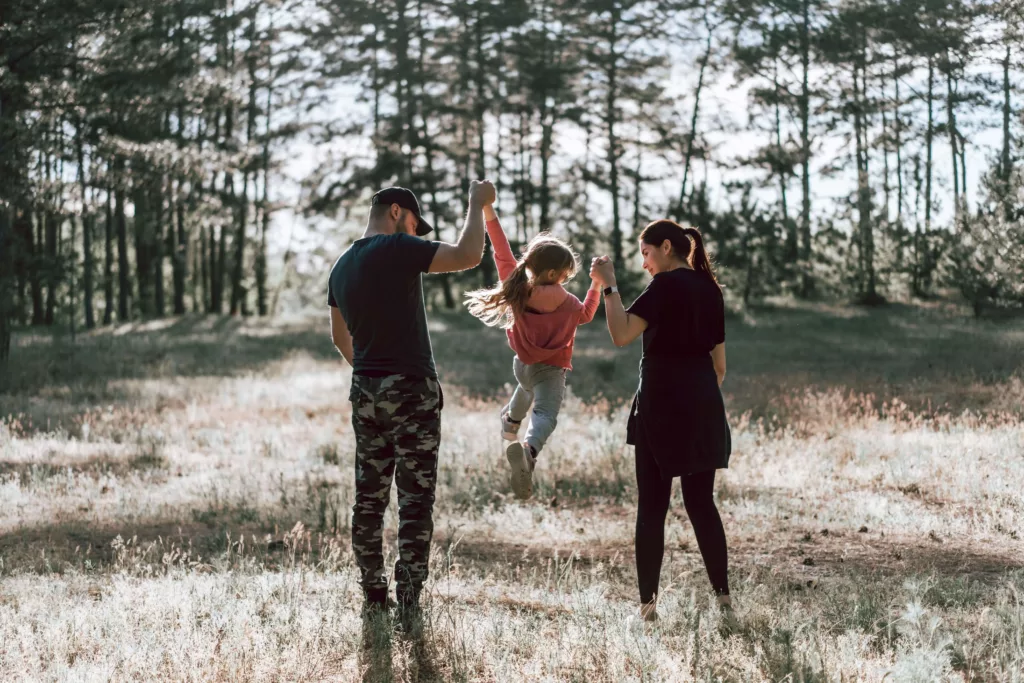Generally speaking, parents may not always agree about what’s best for children.
Finding agreement on eating habits, sleep, how much in-person school is needed, and discipline can be challenging for any set of parents. Add that the parents are separated or divorced and things get more complicated.
Now add in a changing pandemic landscape where experts don’t seem to agree and you have an emotional tornado.
In the best of all worlds, co-parents have a plan to help them problem solve in times of crisis. Without one, making decisions can be truly triggering and create unneeded tension.
It becomes easy to revert to arguing, bullying, and withholding in order to do “what’s right” for the children. The “by any means necessary” methodology will not work in true co-parenting and lead to misery for the children as well as the parents.
How Can We Keep Our Children Safe While Coparenting?
For households with at-risk parents, it may be “How do I keep myself safe?”.
As the landscape of the pandemic shifts and changes, the answer to these questions will change as well. As you negotiate what risks you are and are not willing to take, default to the most common scientific analysis.
Don’t live on the fringes when it comes to science and recommended boundaries. Do not allow politics to interfere with the management of risk.
As you debate how to manage schedules, school, child playtime, masks, pods, etc. here is a list of questions to ask. These will help co-parents determine how to adjust schedules as the pandemic advances.
Questions:
- How much is it in the child’s best interest to follow the current plan for shifting children between households? (how much in the health of the parents and their partners?).
- Which home is best supported for virtual schooling? Which is better for in-school?
- How much contact with people outside their “pods” do both parents have?
- Who else is in the home? What is their potential exposure?
- What opportunities do both parents have for outdoor play?
- What are the risk level of parents and their households?
- When opting for long time intervals between child “hand-offs”, are the children seeing enough of the other parent? If not how might that be addressed?
Negotiation During Covid Coparenting
These questions all have the safety and well-being of the children and the parents at their heart.
Renegotiating an agreement that is best for the children will answer these questions and take into account the level of risk both parents are willing to take on. They also begin to take into account that intervals between hand-offs may necessarily be longer and open questions on how to manage that from a child’s need perspective.
Naturally, this kind of negotiation demands that parents be flexible, fair, and work together.
Here are some tips for working together:
- Respond to one another in a timely manner.
- Use text and email if tensions are high to avoid a “he said she said” argument.
- Do not keep score, it’s not about being right it’s about what is best for the children.
- Look for solutions, don’t live in the problem.
- Schedule virtual meetings with your co-parent and the children so that you all stay connected.
- Be prepared to give make-up time post-pandemic as needed if what’s best from a safety perspective is not fair to both parents.
Slow-Moving Crisis
We are in the strangest kind of crisis, it’s kind of like riding a slow-moving glacier.
Clearly, it’s moving, and we don’t know how long it will be until it stops. We know it’s destructive and yet happening so slowly it does not feel like a crisis.
This is a kind of crisis make no mistake. It will end, and as long as we keep our children’s well-being on the front burner with the understanding that we are in it together, they will come out stronger for it as will we.


